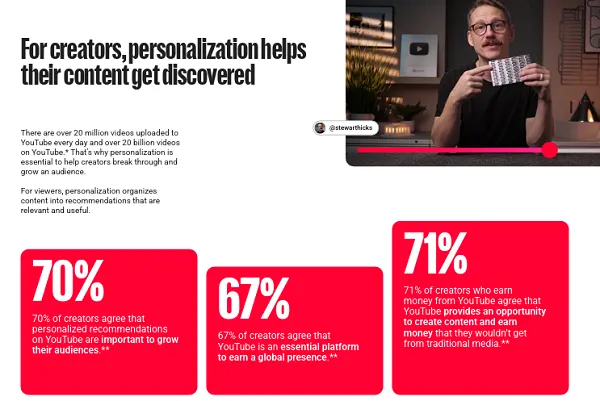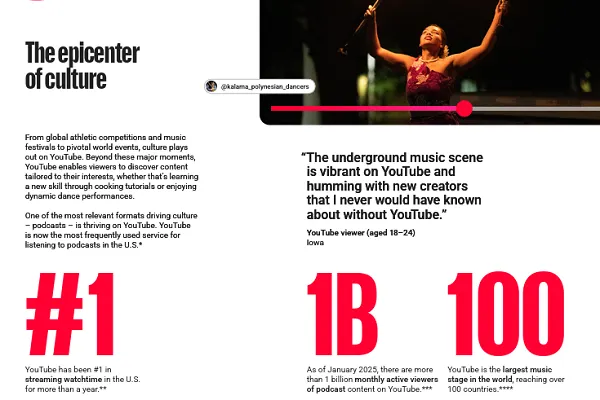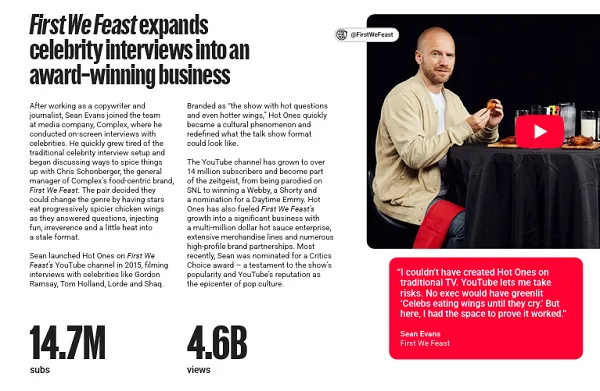YouTube contributed $55 billion to America’s GDP in 2024, while supporting the equivalent of 490,000 full-time jobs in the U.S.
That’s according to the latest Oxford Economics Impact Report, which looks at how YouTube is helping to feed into the U.S. economy through its Partner Program, which enables creators to earn revenue from their content in the app.
As per the report:
“In 2007, YouTube had a radical idea that shouldn’t have been so radical – what if creators earned a real share of the value they create? By sharing more than half of advertising and subscription revenue directly with creators, YouTube broke down traditional barriers to entry. Today, YouTube provides a vibrant platform for millions of businesses and content creators to connect with Americans and the world. These creative entrepreneurs are building businesses, hiring employees and contributing to their communities while making videos for the billions of people who turn to YouTube every month for entertaining, educational, and cultural content.”
The full 39-page report (which you can download here) includes in-depth breakdowns of YouTube’s economic contributions, including a simple overview of the YouTube revenue share model, and the various ways that creators can earn in the app:
The report also looks at how YouTube’s algorithmic approach helps creators find their audience:

Along with a range of data points on YouTube’s business and cultural impact:

There are also case studies on how successful YouTubers have built their brands on the platform, and converted them into (sometimes) into multi-million dollar franchises:

As well as broader notes on how YouTube provides opportunities for business promotions in line with viewer engagement and reach.
The bottom line here is that YouTube is now a major contributor to growth, offering significant opportunity for creators of all kinds to monetize their passions.
Though it does take work. The thing that I dislike about creator economy reports like this is that they suggest that anyone can just start a YouTube channel and start raking in the money, but like any creative endeavor, it takes time and commitment to create great content, and build an audience, which you can then monetize in the app.
Indeed, according to reports, only around 4.3% of YouTube creators make more than $100k per year, while 48% of creators earn $15,000 or less p/a.
This is he one element that’s probably missing from this overview, that while Oxford Economics has provided estimated data on economic output and full-time equivalent employment stemming from YouTube more broadly, what it hasn’t noted is how many creators are actually making money in the app, and what these overarching data points mean in real terms.
For example, last year, YouTube reported that 3 million creators have signed up to its partnership program, so essentially, only 0.12% of YouTube users are actually monetizing their content at all.
YouTube paid out $70 billion to these creators in the three years leading up to January 2024, which, at those numbers, equates to an average payout of around just under $8k per creator. And that’s including big stars like MrBeast, who reportedly earned around $85 million from YouTube last year.
So, on balance, the earnings potential here is likely more limited than the topline data may suggest, with most creators left with only a minor share of the billions being promoted as the key focus.
That’s not to denigrate the opportunities that YouTube provides, but those topline figures and case studies can skew the reality, which can lead to disappointment for many.
But the opportunity is there, and YouTube does provide a platform that anyone can use to highlight their passion.
You can read the full Oxford Economics YouTube Impact Report here.



